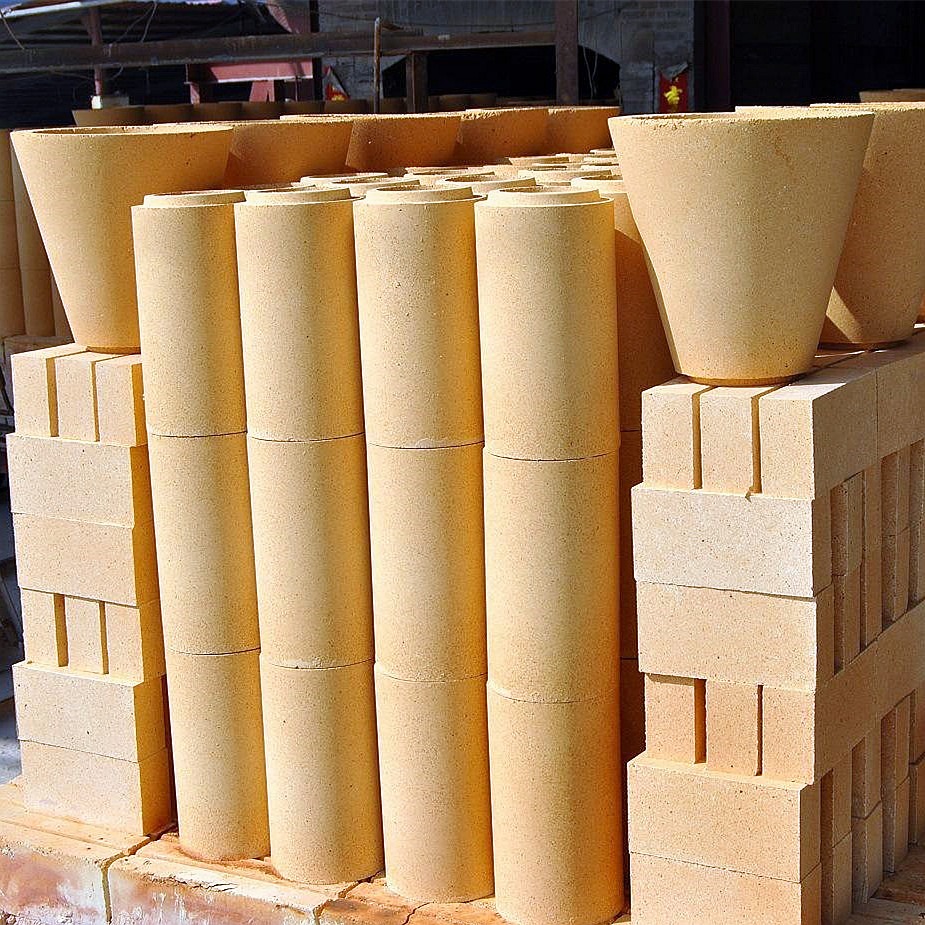The Science Behind Refractory Bricks: Why Microstructure Matters
1. Introduction
Refractory bricks are the backbone of high-temperature industries—steel, cement, and glass production rely on them to line furnaces and kilns, enduring temperatures over 1,500°C. Yet not all refractory bricks perform equally: the secret to their strength, heat resistance, and longevity lies in their microstructure. This often-overlooked detail determines whether a refractory brick cracks under thermal shock, resists corrosive slags, or fails prematurely. Understanding how microstructure shapes refractory bricks is key to choosing the right material for industrial needs.
What is a Refractory Brick?
Definition and Basics
Refractory bricks are ceramic materials engineered to withstand extreme heat without melting or deforming. Their composition varies by use case, but common types include: high-alumina refractory bricks (alumina content 40–90%, ideal for steel BOFs), fire clay refractory bricks (cost-effective for low-to-medium heat applications like brick kilns), and silicon carbide refractory bricks (used in glass kilns for their abrasion resistance). Regardless of type, every refractory brick’s performance is rooted in its raw materials—such as magnesia, alumina, or silica—and how these materials bond at the microscopic level.
Key Properties
For refractory bricks to work in industrial settings, they must excel in three core properties:
• Refractoriness: The ability to withstand high temperatures without softening (measured by “refractoriness under load,” or RUL).
• Thermal shock resistance: The capacity to handle rapid temperature changes (e.g., a furnace cooling and reheating) without cracking.
• Chemical resistance: Resistance to corrosion from slags, gases, or molten metals (critical for steel and cement production).
All these properties are directly influenced by the refractory brick’s microstructure—no amount of high-quality raw materials can compensate for a poorly optimized microscopic structure.

Unraveling the Microstructure of Refractory Bricks
Components of Microstructure
A refractory brick’s microstructure is made of three key elements:
• Grains: The solid, crystalline particles (e.g., alumina or magnesia crystals) that form the brick’s “skeleton.” Smaller, evenly sized grains create a denser structure, boosting strength.
• Grain boundaries: The thin layers between grains. Strong, well-bonded grain boundaries prevent cracks from spreading—weak boundaries, by contrast, lead to brittle refractory bricks.
• Pores: Tiny voids within the structure. While some pores are unavoidable, too many (or large pores) reduce thermal conductivity and let corrosive substances seep in, shortening the refractory brick’s life.
How Microstructure is Formed
Microstructure isn’t random—it’s shaped during the refractory brick’s manufacturing process:
• Raw material mixing: Uneven mixing creates clumps, leading to irregular grains and weak spots.
• Pressing: Too little pressure leaves large pores; too much pressure can crack grains.
• Sintering: Heating the brick to high temperatures (1,600–1,800°C) fuses grains together. Under-sintering results in weak grain boundaries; over-sintering shrinks pores too much, making the brick prone to thermal shock.
Every step must be precise to create a microstructure that balances density, strength, and flexibility.
The Crucial Link: Microstructure and Refractory Performance
Strength and Durability
Dense microstructures with small, uniform grains and strong grain boundaries make refractory bricks tough. For example, high-alumina refractory bricks with a fine-grained structure (grains <5 μm) can withstand 20% more mechanical stress than coarse-grained versions—critical for cement kilns, where bricks bear heavy loads of clinker. Porous microstructures, by contrast, break down faster under pressure, leading to frequent replacements.
Thermal Stability
Thermal shock resistance depends on how well the microstructure handles expansion and contraction. Refractory bricks with small, evenly distributed pores act like “shock absorbers”—they let the material expand slightly without cracking. A study of silicon carbide refractory bricks found that those with 15–20% porosity (tiny pores <1 μm) survived 3x more heat cycles (from 1,200°C to 20°C) than bricks with larger pores. This is why glass kilns, which have frequent temperature fluctuations, rely on such microstructures.
Chemical Resistance
A dense, low-porosity microstructure acts as a barrier to corrosive slags. In steel BOFs, molten slag (rich in iron oxide) can penetrate porous refractory bricks, reacting with their grains and weakening the structure. Refractory bricks with a tight microstructure (porosity <10%) block this penetration—extending their life from 1,200 heats to 2,500 heats, as seen in a European steel mill’s trial.

Analyzing Microstructure: Techniques and Tools
Scientists and manufacturers use two key methods to study refractory brick microstructures:
• Scanning Electron Microscopy (SEM): Creates high-resolution images (up to 100,000x magnification) to see grains, pores, and grain boundaries. SEM helps identify weak spots, like large pores or cracked grain boundaries, before the refractory brick is used.
• X-ray Diffraction (XRD): Maps the crystal structure of grains. For example, XRD can confirm if a magnesia-chrome refractory brick has formed stable spinel crystals (critical for corrosion resistance)—ensuring the microstructure meets performance standards.
Real-World Case Studies
Steel Industry
A U.S. steel mill was replacing BOF refractory bricks every 1,800 heats. Analysis showed the bricks had coarse grains (>10 μm) and large pores, leading to slag penetration. Switching to a high-alumina refractory brick with fine grains (3–5 μm) and low porosity (8%) extended life to 2,800 heats—cutting replacement costs by 35%.
Cement Industry
A Indian cement plant struggled with kiln refractory bricks cracking from thermal shock. SEM revealed uneven pores (some >5 μm) and weak grain boundaries. Using a fire clay refractory brick with uniform small pores (1–2 μm) and strengthened grain boundaries reduced cracks by 70%, extending runtimes from 45 days to 70 days.
Conclusion
Refractory bricks’ performance isn’t just about raw materials—it’s about microstructure. Every grain, pore, and grain boundary shapes how a refractory brick handles heat, stress, and corrosion. For industries relying on high-temperature processes, understanding this link ensures longer-lasting, more efficient refractory bricks—saving time, money, and reducing downtime. In short, microstructure isn’t a detail for refractory bricks—it’s the foundation of their success.
Inquiry Now
Please leave your e-mail and we will contact you as soon as possible
contact us
Your satisfaction is our top priority. Whether you have questions, need support, or want to share feedback, our dedicated team is ready to assist you every step of the way.